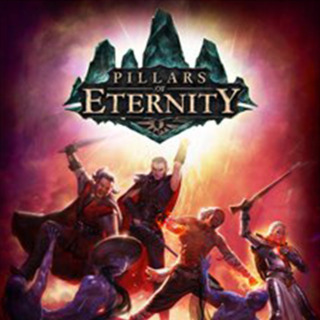INTRO:
In addition to having a reputation of not being great at writing reliable code, Obsidian Entertainment also has a problem with keeping to their scheduled plans. In its history, it has released games at “feature-complete” status but with some planned content missing, and/or skipped certain important quality assurance processes to rush a project to market: Fallout: New Vegas and Alpha Protocol are some of the worst examples (the latter being particularly so).
Although Obsidian’s mostly convincing success with Pillars of Eternity greatly improved the skills of its designers, there were still vestiges of the shortfalls that they have inherited from their predecessor Black Isle; one of these is their inability to reliably manage the scope of their content, or at least mask them with rearrangement and/or rebranding of their planned products.
This problem manifested itself in the form of the “first part” to the first expansion of Pillars of Eternity.
PREMISE:
The Leaden Key is the primary antagonist organization in the main story of Pillars of Eternity. Its hands are just about everywhere in the Eastern Reach of the world of Eora, and it so happens they have touched the region of the titular White March, and some place just to the south of it.
The White March is a region north of Dyrwood and Eir Glanfath (the regions that are featured in the main game). Although it is a cold place with many dangers, it has plenty of secrets, the most notable of which is the sealed fortress of Durgan’s Battery. It is the host of the fabled White Forge, which has produced much wondrous metalwork.
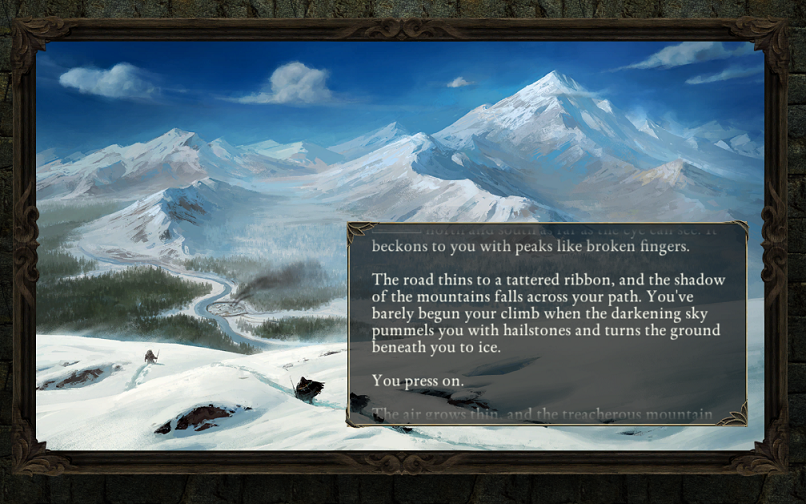
Recently, it has caught the attention of the Leaden Key. With the excuse of denying whatever is in Durgan’s Battery from the Leaden Key, the protagonist and his/her companions intend to breach the seals on the fortress and find out for themselves the secrets within.
The protagonist’s rule of the keep of Caed Nua is also used as the excuse to have the player getting involved in one of the side stories. Crägholdt is a nearby fastness that is the domain of a powerful but isolationist mage. Recently, the place has come under siege by an infamous (and very well-resourced) mercenary army. Under the excuse of being concerned that the battle might spread to Caed Nua, the protagonist and companions set out to discover the reason for this war being waged so close to home.
LEVEL CAP INCREASE & NEW ABILITIES:
The level cap has been raised to 14. New abilities for player characters are also introduced to furnish this level increase. The abilities are available for player characters to get if they are still in the regions of the base game, but any other things, such as gear, materials and ingredients that are introduced in the expansion, have to be found at the White March.
Some of the additional class-unique abilities are powerful, but also balanced with noticeable setbacks. For example, the Fighter gains the Sundering Blow ability, which a stronger than usual blow that also greatly lowers the target’s Damage Reduction. However, the debuff lasts for only 8 seconds, so the rest of the party has to be ready to take advantage of this. For another example, the Paladin’s Healing Chain has high healing potential, but the healing burst picks its target randomly, with no clear attempt at being efficient.
COPYCAT TALENTS:
There were people who clamoured for multi-classing in the progression system. Unfortunately, the base code for the game, which includes the progression system, is set in stone. The most that Obsidian could do is implement weak versions of signature abilities for use by other classes.
For example, characters can gain the Aspirant’s Mark ability, which is a weaker version of the Druid’s Nature’s Mark spell and which can only be used one time before having to be reset with resting.
They are mostly unpalatable, especially when the player could pick abilities that further reinforce a character’s strengths.
SOULBOUND ITEMS:
Soul-bound items were introduced to the main game at the same time as this expansion. The expansion introduces five more soul-bound items, and like the ones in the base game, they have peculiar requirements for their upgrades. One of them is even central to a side quest (and it has the ages-old nasty fantasy trope of being cursed to be ever held by its wearer). Most of the soul-bound items have to be found through adventuring.
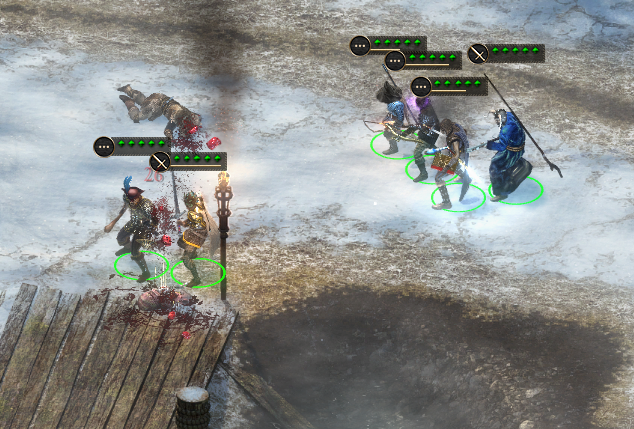
MORE UNIQUE GEAR PIECES:
There are additional unique gear pieces that can be found in the White March; they can be looted from treasure stashes (hidden or otherwise) or bodies of champions, or bought from merchants. Like the unique items in the base game, they have special properties, or permutations of properties, that are unique to them. The main difference is that they have greater benefits that are appropriate to teen-level characters.
Incidentally, a wily player could attempt to get some of these while the player characters are still a bit under-levelled, and therefore go into fights with relatively low-level enemies with sweet gear. However, many of these new gear pieces would require the player character to defeat powerful enemies (or sneak past them, which is not easier).
ENEMIES:
The Winter March is a substantially different place in terms of clime, so the monsters, critters and native peoples that are found there are different from their counterparts in more temperate climes.
However, the keyword here is “counterparts”. Many of the enemies in the Winter March function and behave in quite the same ways as their cousins did in Dyrwood and Eir Glanfath, though they might have some additional abilities. For example, Winter Wolves behave similarly to regular wolves, but they can also breathe frost on their enemies. For another example, the amphibian Lagufaeth are bigger and much faster versions of the reptilian Xaurip, and some of them have blow darts that can paralyze their enemies.
There are some genuinely new enemies, of course. The first of these is the Ogre Cannoneer. This is an ogre that has managed to salvage one of the cannons from Durgan’s Battery, at great risk to his own safety and sanity. Their ranged attacks have considerable area of effect, making them quite dangerous when the player is trying to have priests or druids cast buffs on the party. (By the way, many of these buffs have short areas of effect.)
There are a lot of fights with enemies, even when it seems like they could have been avoided. Furthermore, the consequences of these battles are not always acknowledged in the story-writing. For example, to meet a certain animancer, the party has to plough through constructs that are guarding corridors and rooms that are just too small for a stealthy character to sneak through.
Even if the player cuts them down, their loss is barely acknowledged by the animancer. The animancer also does not seem to care much that they are set to kill anyone who ventures into the lab, despite him professing himself to be a reasonable person.
Perhaps this is Obsidian’s way of showing off their new ideas for enemies, and perhaps there are narrative excuses for these scenarios. Yet, they can annoy people who prefer to have more options to deal with obstacles.
Of course, there still are peaceful means of dealing with enemies in other cases, but these only appear in the scenarios that occur at the Winter March. There is next to none for the case of Crägholdt.
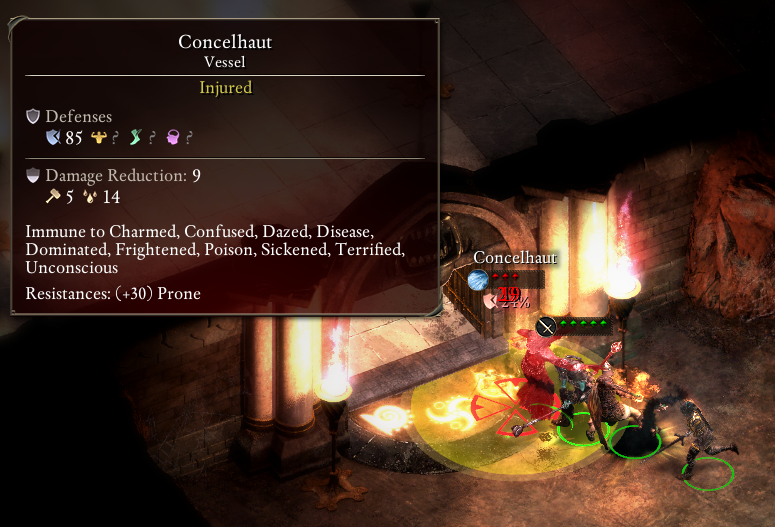
CRäGHOLDT:
Crägholdt is the source of the complaints about the expansion being too combat-heavy. The exterior and interior of this map is crammed with fights after fights against very powerful enemies that can challenge even characters that have advanced to the levels in the second part of the expansion. The aggro ranges for enemies in the exterior of the map are also distressingly long; it is very easy to get inundated by the powerful mercenaries that are sieging the place.
The worst of these are fights with NPCs who bring up a dialogue, but which inevitably end with violence anyway because of their pride and/or pig-headedness. There is only one instance in which the player gets to pick his/her fights, and even so, there are only very few NPCs that can be spared the typical ignominious demise of those who put themselves in a RPG protagonist’s way.
This preponderance of combat contrasts so severely against the other encounters with hostile people in the rest of the game (and the rest of the expansion for that matter). Even with the most hostile of NPCs in the cases of the latter, there is at least one option for peaceful resolution that can be unlocked with meticulous effort. That the most prominent NPCs in Crägholdt simply wave away any chance for peaceful outcomes after talking with the protagonist can be awfully jarring.
Perhaps Obsidian’s writers wanted to have their take on the clichéd trope of chatty villains who talk too much before attempting to kill opponents whom they believe are inferior. If so, they should have avoided this cliché and focused on their original writing direction anyway.
FIRST “PET” WITH PRACTICAL BENEFITS:
At least the Crägholdt episode results in a reward that would be the prototype for an improved design in the second Pillars of Eternity game. This is a “pet” item, Concelhaut’s Skull. Its follower scripts are hopelessly bugged, but it has a power that can be invoked: the namesake person appears, and he is a very powerful wizard that drains the protagonist’s health in return for his service.
NEW COMPANIONS:
There are two additional companions that are introduced in this expansion. Incidentally, their professions are those that were not represented by companions in the base game.
The first of these is Zahua, a monk. He might make a goofy first impression, being a drug user and someone who is (initially) near naked in the cold Winter March. Of course, monks being monks, the strength of their soul makes the risk of exposure a non-issue. Like typical monks in the world of Eora, he is on a quest for spiritual enlightenment, and one that involves the use of a variety of drugs too.
The other is a rogue, the Devil of Caroc. She is a construct, and not a kith. Being a construct, she has many benefits, such as being immune to disease, poison and mental de-buffs. She cannot consume food or drugs, however. (Despite being a construct, her mechanical body is not an impediment to her stealth, and she can somehow still use potions.) She is not entirely happy about her current state, but the alternative was capital punishment for being a criminal.
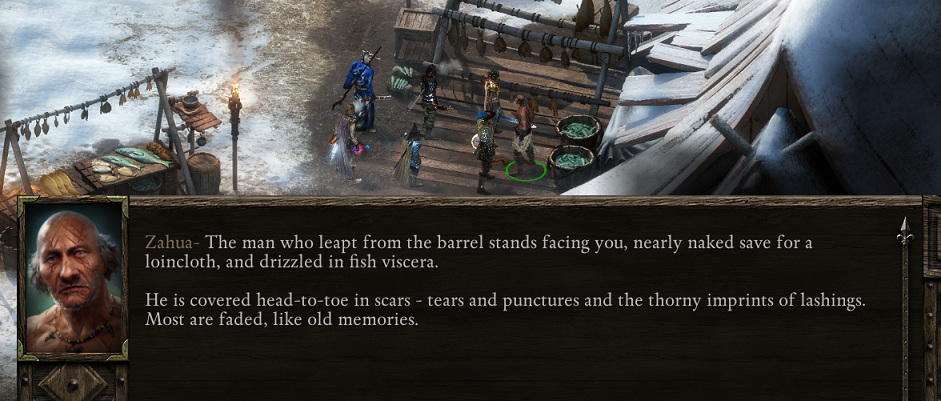
This is of course more of the entertaining writing that can be expected from Obsidian. Yet, these companions are the most obvious indicator that Obsidian has not managed the scope of the content in the expansion well. Devil of Caroc has one companion quest, but Zahua does not have any, and he will not get one until the second part of White March.
SEVENTH-LEVEL SPELLS:
Wizards, cyphers, druids and priests gain access to level 7 spells. These are powerful spells that can easily turn the tide of a battle if used effectively at opportune moments. For example, Storm of Holy Fire can wreck enemy spell-casters and fire support, possibly even killing them before the front-liners have finished their fight (Besides, CPU-controlled opponents are too stupid to move out of the area of effect anyway.)
Of course, there are enemies that are packing these spells too, so the player might want to watch out for them.
Of particular noteworthiness is the introduction of certain unique spells. In the canon of Pillars of Eternity, talented and experienced wizards invent many spells, but some of them keep some of their spells for their own use, or to be more specific, in their personal grimoires. These spells cannot be obtained through level-ups, because they are not commonly circulated spells.
These have to be learnt by obtaining the grimoires of wizards that know them (likely by taking them off their cold dead hands) and copying the spells.
FOURTH LEVEL PHRASES & INVOCATIONS:
Chanters gain fourth level phrases, which have long active and lingering durations and great benefits. The expansion also introduces new invocations. One of them bolsters the chanter’s combat performance considerably, one of them inflicts severe damage on foes and the third summons a swamp spore, which can mess up the enemy’s tactical plans.
As in the main game, the player would have to balance the completion of phrases against maintaining phrases.
VISUAL DESIGNS:
The White March is in the mountainous glaciers of the Eastern Reach, so there is plenty of snow and dried and cracked earth. Old weathered rocks and even blue adra formations jut out here and there, reminding the player that there are older things than just the fresh snow and permafrost. There are also plenty of dead trees and the ruins of civilization. The end result is that the White March looks inhospitable, desolate and rather melancholic, which is perhaps what Obsidian intended.
There are particle effects that are there to emphasise the inhospitable conditions of the White March. For example, there are powdery wisps of snow flitting across the screen in some maps. In another example, wind funnels can be seen forming in the wake of air that has flowed through monuments with circular orifices. The snow effects can be a little bit taxing on low-end computers, however.
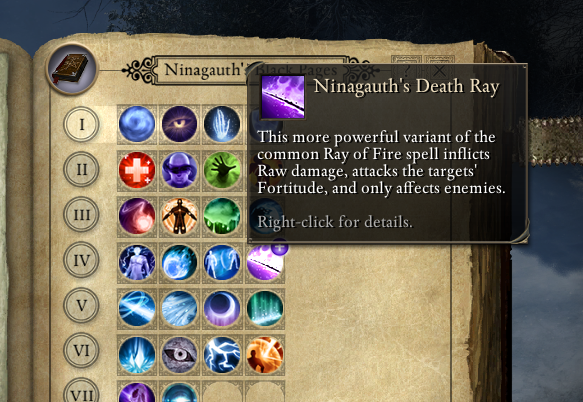
Durgan’s Battery looks like it has lost much of its glory. Its exterior battlements have crumbled, with little of its cannonade remaining (no thanks to looting over the years by ogres). The interior is much more impressive, if only because it shows how industrious the dwarves of Eora can be.
The creatures that are introduced in the expansion look surprisingly good too. One would have expected Obsidian to recycle some designs from the base game, like Black Isle infamously had. However, most of them look like they have been designed from scratch. Even the ogres of the Winter March look quite different from their cousins in warmer climes (and even more so if they are holding cannons).
Perhaps the most interesting of the creatures are the non-living ones. The ice blight is introduced in this expansion; it looks like a nasty flower made of shards of ice. There are also incomplete anima constructs, who stagger about hoping to end their miserable existences with a glorious bang.
SOUND DESIGNS:
Predictably, since the expansion is set in the wintry mountainous north, there are howling winds that can be heard, together with the crunching of snow as characters move about.
Some new music tracks have been introduced in this expansion too. A scant few of them are remixes of the tracks in the base game, but most of them are new. For example, there are foreboding tracks for the more dangerous and less open places, and these sound more haunting than the tracks that are used for similar places in the base game.
The most notable of the new tracks is a song by a real person. This track plays in the Gréf's Rest tavern, specifically by the unnamed bard in front of the hearth. Incidentally, this song happens to be related to the overarching story of both White March expansions.
Perhaps the least impressive of the sound designs is the voice-acting. Some of the new voice-acting is done by people with Southern USA accents. They can be a bit jarring to listen to, because they are not exactly easily associable with settings of cold climes. The voices for non-human characters can be even more difficult to listen to, mainly because the strain on the voice-actors’ larynxes is obvious.
The new sound effects are mostly for the spells. For example, there are the thumps of impossible fiery rain from the Storm of Holy Fire as the flaming downpour hits the ground.
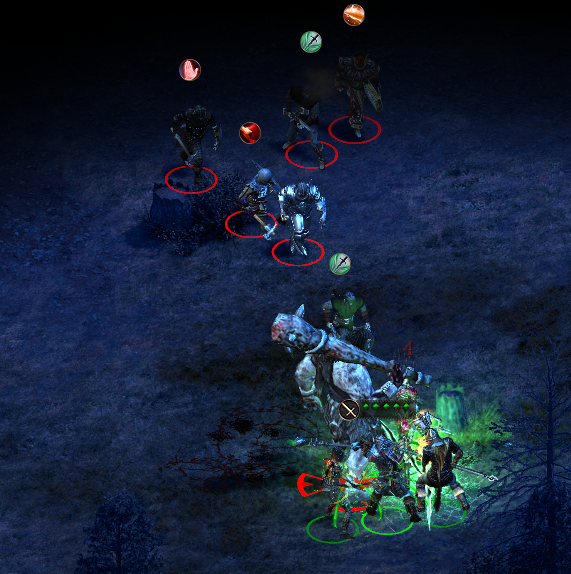
CONCLUSION:
Obsidian is a bunch of great writers and story designers; that should be beyond doubt. The features that are introduced by the expansion also add more of the same goodness in the base game.
Yet, Obsidian’s people are still not good at practical skills, project management being one of them; White March Part I maintains this perception still. This expansion is not convincingly unfinished, of course, but it has small jarring flaws that are just not easy to overlook, and apparently, a year on, could not be addressed by Obsidian.
